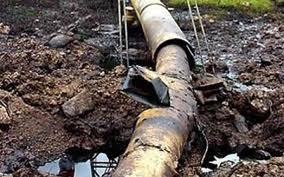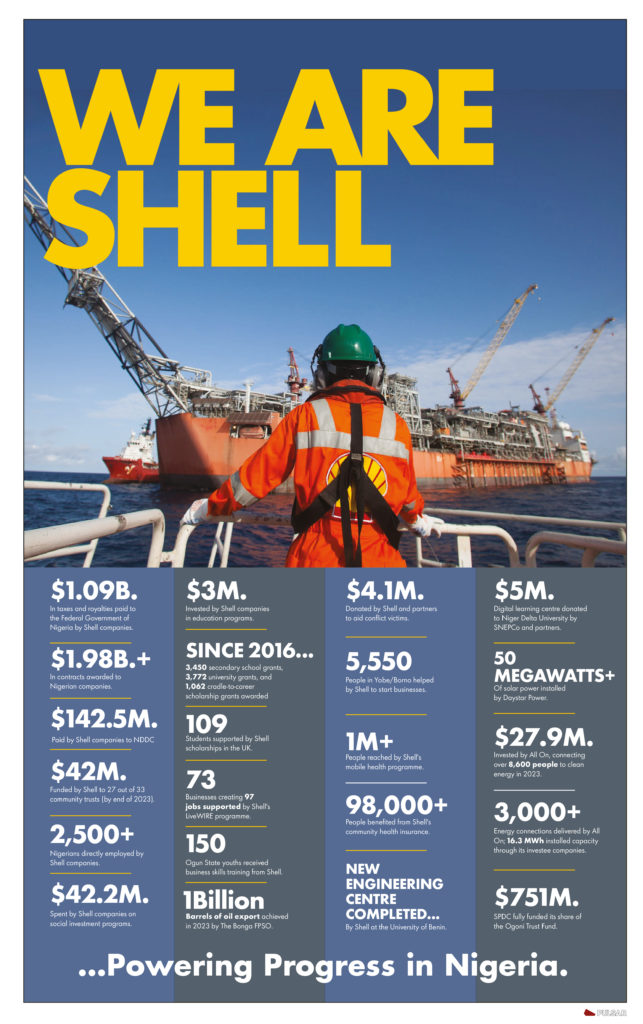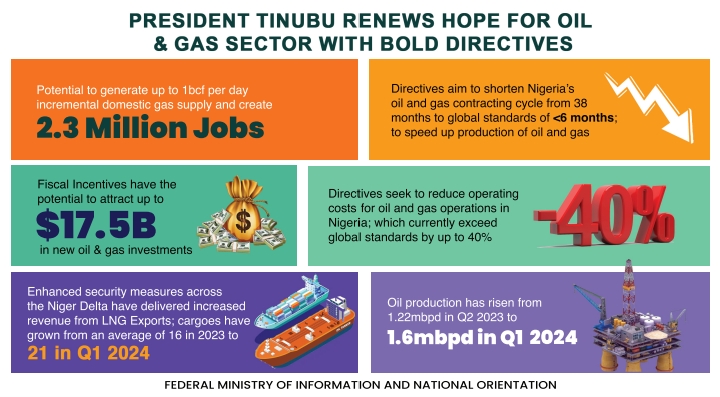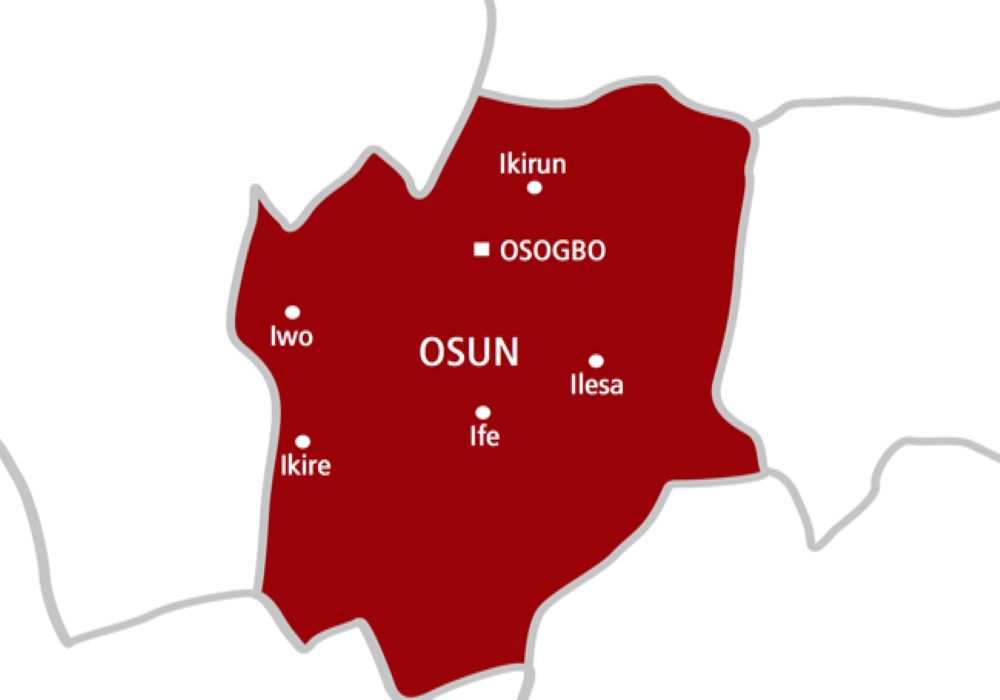DrillBytes
PLATE TECTONICS AND RISING SEA LEVELS

With Kayode ADEOYE
 AS humans are breaking new grounds in technology and generally moving mankind forward with the benefits of such innovations, so also is the dynamics of the mechanics below the earth changing. Some experts are devoted to studying these changes to know their impact on the biosphere. One of such studies, the focus of this column for the week, was originally written by Julie Cohen from materials provided by the University of California, Santa Barbara. The study itself was carried out by Associate Professor Alex Simms of the University’s department of Earth Science.
AS humans are breaking new grounds in technology and generally moving mankind forward with the benefits of such innovations, so also is the dynamics of the mechanics below the earth changing. Some experts are devoted to studying these changes to know their impact on the biosphere. One of such studies, the focus of this column for the week, was originally written by Julie Cohen from materials provided by the University of California, Santa Barbara. The study itself was carried out by Associate Professor Alex Simms of the University’s department of Earth Science.
For millions of years, the Pacific and North American plates have been sliding past and crashing into one another. This ongoing conflict creates uplift, the geological phenomenon that formed mountains along the west coast of the United States of America. A new analysis by University College, Santa Barbara, UCSB earth scientist Alex Simms demonstrates that the Pacific coastlines of North America are not uplifting as rapidly as previously thought. The results appear in the journal, Geological Society of America Bulletin. “Current models overestimate uplift rates by an average of 40%” said Simms, an associate professor in UCSB’s department of Earth Science. “They do not take into account glacio-isostatic adjustment, the earth’s response to the melting and growths of past ice sheets. Previous studies of the pacific coast, including California, have ignored this when trying to use past sea levels to calculate uplift rates.”
Uplift is the vertical elevation of the Earth’s surface in response to Plate Tectonics. Scientists determine uplift rates by measuring marine terraces; flat mesas that indicate where the ocean level used to be and comparing their elevations to geologic records of sea level change. However, traditionally used “global” sea level records come from places like the Huon Peninsula of Papua New Guinea, far away from the ice sheets that once covered Canada. That’s a problem because the freezing of water into ice sheets and its subsequent thawing actually changed the shape of the Earth ever so slightly and this deformation affects ocean levels. According to Simms, the land responds the way a mattress does, indenting from weight and then, relaxing back to its original shape. The Earth’s gravitation field also changes in response to the building up and melting of these ice sheets. These changes to the land and Earth’s gravity cause past sea levels to vary across the world. Most of the glacio-isostatic adjustment are not caused by current glacier melt but by one rebound of the Earth from the several-kilometer-thick ice sheets that covered much of Canada 20,000 years ago.
Simms and his colleagues compiled existing elevation measurement data from more than two dozen sites ranging from mid-Oregon to Baja, California. They then recalculated uplift rates for each, applying a correction for glacio-isostatic adjustment. Some areas are affected to a greater degree than others. The uplift rate for Punta Cabras in Baja, California showed the largest difference: 72 percent lower than previous estimates.
The rate for the San Diego area was reduced by 62 percent. For other areas, the rate changes were not as dramatic. “Areas in Oregon are moving so fast that you add the correction, the adjustment is much smaller: 10 percent to 20 percent”, Simms said. “If a site is going up 100 meters versus 90 meters, that’s not a big change. Here, sea level changed differently because of the distance from where these big ice sheets used to be.” The study provides one of the first spatially corrected sea level records for California. “A 2012 study looked at one spot with one model, but we looked at variation across the state”, Simms explained. “Now, our data can be applied not only in California but along the Pacific coast of North America.”
Plate Tectonics is the theory that the outer rigid layer of the earth (the lithosphere) is divided into a couple of dozen “plates” that move around across the earth’s surface relative to each other, like slabs of ice on a lake. Plates are a combination of continents and ocean basins. A plate may be an ocean basin alone or a continent alone or a combination of both. The essence of plate tectonic theory is that the plates slide around over the earth’s surface interacting as they do, at the plate boundaries.
The conclusion of the matter is that, along with the challenge of climate change, humanity is faced with a clear and present danger and, unless concrete steps are taken, the environment may not be this friendly afterwards. It is gratifying however, that the world is working round the clock to checkmate this challenge, one that faces Nigeria in equal measure.
It is disheartening to note that Nigeria is allowing herself tolag behind in the race! The position paper the world expects from Nigeria on the concrete steps she’s taking along these lines is yet to be submitted as at the time of going to press. What is so difficult in putting an end to gas flaring, regulate the inflow of junk cars and increase power generation to reduce the menace of generator fumes among others? This is a direct challenge to the climate change department of Nigeria’s ministry of environment! It is a challenge to the leadership and followership in Nigeria. Taking up the challenge is the only way to contain the threat, the only way to save ourselves from ourselves!

DrillBytes
Fuel hoarding and guerilla marketing

By Kayode ADEOYE
LAGOS-FUEL scarcity is back in Nigeria in a monstrous dimension. It started in the last quarter of year 2015 and continued unabated. A man-made plague that is big business for some, and big wahala (trouble) for others. The menace makes government look irresponsible and outrightly insensitive. In a way, the government is fighting a system and the system is fighting back only this time, with the latent potential of turning the people against their leaders! Drillbytes, this week, brings to the fore the racketing behind the scarcity and what government can do to make this multi-million dollar business a multi-trillion naira liability for the fuel racketeers.
Since 1998, Nigeria has been spending billions of Naira on subsidy of petroleum products to cushion the effects of the increase in pump price of the products. Unfortunately, the refineries are not working at full throttle and even if they are, they can only produce half of the country’s demand implying the other half will be sourced from without.
 As if this is not bad enough, the 22 fuel depots across the country owned and managed by the state owned Pipelines and Petroleum Marketing Company, PPMC is moribund and in dire need of rehabilitation. Due to these reasons, government licensed private investors to import petroleum products into the country, store and distribute to various filling stations across the country through trucking.
As if this is not bad enough, the 22 fuel depots across the country owned and managed by the state owned Pipelines and Petroleum Marketing Company, PPMC is moribund and in dire need of rehabilitation. Due to these reasons, government licensed private investors to import petroleum products into the country, store and distribute to various filling stations across the country through trucking.
The independent marketers presently import 50% of the country’s daily consumption while the state owned Nigerian National Petroleum Corporation, NNPC imports the balance of 20 million litres. Good a thing, it has been reviewed to 78%/22% for the NNPC/Independent marketers. Better still, if it is 100%/0! As a result of this imbroglio, it looks to many, like the NNPC is doing nothing!
Yet, the NNPC imports refined products and distributes accordingly while the independent marketers import their quota and may decide to distribute or not depending on how they feel about issues of pricing variations generally referred to as subsidy. They hoard their quota and the vacuum created makes the NNPC’s ration grossly inadequate to nourish the voracious appetite of consumers.
The Petroleum Minister, through the Directorate of Petroleum Resources, DPR has shut several independent fuel depots and filling stations across the country for hoarding fuel. As a matter of fact, some defaulting filling stations have had their product dispensed free of charge to consumers. Apparently, these measures are not deterrent enough as the practitioners have found ways round it! The NNPC says that the landing cost of premium motor spirit, PMS otherwise referred to as Petrol across all depots is N77.00/litre for which it must pay a subsidy of about N10.00/litre. Petrol presently sells at government regulated price of N87.00/litre but at the height of the menace, it can sell for as much as N400.00/litre!
The independent marketers complained that they owe banks for the last import they made and government must pay them their accruable subsidy for things to be normalized. Government on its part, said the subsidy was not captured in the last budget and at such went ahead to make a supplementary budget to capture the close to N500B subsidy payments, approved by the country’s national assembly and dispensed to the marketers. While this was ongoing, the consumers were suffering, the artisans were gnashing their teeth and the economy was being asphyxiated.
Apparently the racketeering marketers have devised devious means of checkmating the DPR onslaught as they dispense fuel in the late hours of the night or wee hours of the morning because they believe the DPR officials work from 8:00hrs to 17:00hrs daily.
They in turn sell fuel at the depots and at the filling stations between 19:00hrs to 22:00hrs and 05:00hrs to 08:00hrs of the night and day respectively at rates far higher than the approved rate. Small wonder fuel tankers move more in the night than in the day during fuel scarcity, man-made, that is. These carefully selected hours of dispensing fuel by the independent marketers are not rigid but very flexibly sensitive to DPR inquisitions and the stark truth is that any DPR official that attempts to sanction the erring marketers will probably meet with the wrath of irrationally desperate consumers. It is that bad. This, therefore, is how the independent marketers are making humongous profit out of a well concocted problem in the name of the government and in solidarity with the people!
As has repeatedly been submitted by DrillBytes, the options open to the government is to continue paying subsidy to the independent marketers while fixing the refineries and depots, appoint the NNPC the sole importer of refined petroleum products into Nigeria which they can now sell to independent marketers for effective distribution to consumers across the country and at government approved price or privatize the refineries, the depots and allow free market economy take control. Of all these options, DrillBytes is certain, the most cost effective, people friendly and chaos sensitive is for the NNPC to be the sole importer of fuel in the short term, while fixing of refineries and depots is ongoing and in the medium term, privatization.
The racketeers have inflicted terrible pains on the people and the country for far too long, it is time to put them where they belong; A cage! Yes, it is time to take care of the subsidy challenge once and for all and effectively decimate the racket behind the market.
drillbytes1@gmail.com
DrillBytes
Reviving a bunkered economy

By Kayode ADEOYE
LAGOS-IN an article written for Africa in Transition by Emily Mangan, an environmentalist, bunkering deals with the storage of petroleum products in tanks. In marine terms, bunkering is the process of supplying fuel to ships for their own use. It is the criminal aspect of bunkering activities that is not sanctioned by any applicable law that is generally referred to as illegal bunkering.
The term, illegal bunkering, therefore refers to all acts involving oil theft, including diversion and smuggling of oil and unauthorized loading of ships. A common process requires tapping into an oil pipeline and transporting the oil elsewhere to be sold internationally or refined locally. In order to access the oil, a small group of welders will puncture a pipeline at night, establishing a tapping point from where the group can operate.
Theft accounts for roughly 15 percent of Nigeria’s 2.4 million barrels per day produced. Oil theft or “bunkering” occurs throughout the Niger Delta, where pipelines crisscross the region. Oil exports revenue accounts for 70 percent of Nigeria’s total government revenue.
A loss of 300,000 barrels a day costs the government roughly $1.7 billion a month. In comparison, only 5,000 to 10,000 barrels are stolen per day in Mexico, which produces a comparable amount of oil. Pipeline vandalism from bunkering leaves pipes especially vulnerable to leaks, spills and major accidents. Roughly, a quarter of stolen crude oil is sold locally. Illegal artisanal refineries “cook” the crude into separate petroleum products.
The end product yields 2 percent petrol, 2 percent kerosene and 41 percent diesel. The remaining 55 percent of crude goes to waste, most of which is dumped into a nearby body of water or into a shallow pit. Last year, the Nigerian Navy destroyed 260 illegal refineries by burning the site and in some cases, pouring out the stolen oil into the creeks, exacerbating environmental damage. Despite the efforts of the military, other refineries pop up elsewhere because it is such a lucrative business. Each refining camp costs only about $4,700 to set up and can make $7,800 a month in profit. The cost of construction is typically no more than 7 percent of annual profits.
In an interview conducted by John Gambrell of the Associated Press on July 30, 2013, Patrick Dele Cole, a former Nigerian ambassador to Brazil said, “This oil that you are buying is the same thing as blood diamonds. The vast majority of the theft actually sees the oil taken out of the country into Eastern Europe, South America and Asia for sale. Those supporting the theft include Nigeria’s military and the nation’s political elite”. Nigeria’s immediate past finance minister lamented that about 250,000 barrels of Nigerian crude was stolen daily between 2012 and 2014 with no high profile arrests made. Isn’t it obvious who the thieves are?
Stories abound of how the stolen crude is exchanged for cash, ammunitions or both on the high seas. In spite of heavy losses by the illegal oil bunkerers, the business still thrives and Nigeria still loses substantial revenue along the line. According to Thisday Newspapers of October 27, 2015, government through the Directorate of Petroleum Resources, DPR offered to revive structured crude oil bunkering by granting license to some of the bunkerers, 91 of which have submitted bids
The ban on bunkering in 1979, according to the newspaper contributed to the upsurge in illegal bunkering activities which is directly inflicting terrible pains on the economy of Nigeria. Perhaps, if government can lift the ban on bunkering, some of the illegal bunkerers can obtain license from the DPR and help in restructuring the illegal business to the advantage of the country.
The Nigerian military have arrested several low profile illegal bunkerers over time but such arrests rather than dissuade the criminals emboldens them. The current Chief of Naval Staff, in an interview he granted Channels Television, bemoaned inadequate patrol boats and attack ships to police the country’s vast territorial waters as well as insufficient funds to adequately fuel the available ships.
The Navy’s setback is the illegal bunkerers’ motivation! The country is not in financially good times but then, if a reasonable fraction of what is lost to illegal bunkering activities is committed to fighting the menace, a drastic reduction in the activities of the criminals will be enforced.
Now that Yudala, an online shop has delivered its first merchandise to a shopper in Lagos (Herald online newspaper of 29th November, 2015) with the aid of a drone, the law enforcement agents will perhaps, start considering the use of drones to gather intelligence on this organized crime and use the superior advantage the technology has to offer in checkmating the activities of the bandits. For more on the technicalities of drone deployment, refer to DrillBytes of October 21st, 2015 published by the Guardian Newspaper.
Yes, if a drone can be used to deliver peace of mind, it can equally be used to deliver peace of the graveyard! Restructuring bunkering is another way of combating the activities of illegal bunkerers. Furthermore, Nigeria needs to understudy Mexico and see what it can learn from the country in terms of crude management and this is besides looking inwards to weed out the fifth columnists (military and politicians) sabotaging the efforts of government at deterring the criminals. These, in the opinion of DrillBytes, are some of the ways by which Nigeria’s bunkered economy can be revived.
DrillBytes
China’s energy odyssey and lessons for Nigeria

By Kayode ADEOYE
LAGOS-AN article that appears in the Economist of November 28th, 2015 detailing how China, one of the world’s biggest drawbacks in the global effort at curtailing the effects of climate change on mankind is dusting itself up to walk its talk on the matter, is here, served.
When the nations of the world first tried to cut a deal to reduce greenhouse-gas emissions in the late 1990’s, America, then the world’s biggest polluter, would not consent to mandatory reductions, all but strangling the accord. These days, China is the biggest polluter and the country without which no global agreement will stick.
China emits more greenhouse gases than anywhere else in the world partly because it has a lot of people; 1.4 billion, compared with 800m for America and the European Union put together. Much of the pollution China causes comes from making goods for other countries. It has been established that once the pollution that goes into traded goods is assigned to the country that consumes them, the average Chinese person harms the planet less than does the average European and much less than the average American.
China was responsible for three-quarters of the net coal-fired power generating capacity added worldwide between 2000 and 2014 and the country’s hunger for coal is not limited to its power stations. At least, a quarter of Chinese coal is used in what Laszlo Varro, a fossil-fuel expert at the International Energy Agency, calls a “Dickensian” manner. Burned inefficiently in boilers to heat buildings and power textile mills, it has fouled the air around Chinese cities turning them into a replica of 19th-century Manchester.
Climate change denial is strikingly rare among China’s political leaders, some of whom trained as engineers. They understand that their country is expected to suffer some of the worst consequences of global warming; Northern China, which is increasingly hot and dry, will probably become hotter and drier still. The politicians are also well aware that their country’s urbanites are fed up with breathing toxic air. Before 2012, no city disclosed air-quality data, recalls Ma Jun of the institute of Public and Environmental Affairs in Beijing.
Now, about 400 cities do. Around the big cities, heavy polluters are increasingly chivvied to clean up. To an extent, the problem is simply being pushed from China’s coastal cities towards the interior. The coal-fired power stations that are shutting the east coast are some of the most polluting in the world. The new ones being built in the west are some of the world’s best.
They burn coal at higher temperatures and use higher pressures making them more efficient. China is also throwing money at nuclear power and renewables. It spent almost one dollar in every three invested in renewable energy around the world in 2014, according to Bloomberg New Energy Finance, a research firm. Last year, China got about 11% of its energy from renewables, helped by an unusual quantity of rainwater to power its hydro-electric stations. The country also claims to have connected five gigawatts of solar power to the grid in the first three months of 2015, almost the equivalent of all the solar panels in France.
Some of this renewable power is wasted. In China’s command and control energy market, power stations are contracted to produce electricity months in advance. Although the energy companies are supposed to favor renewables, they find them hard to handle because their supply is not reliable and many coal-fired power stations supply heat as well as electricity to local customers, making them preferable to solar and wind farms in winter. In short, says Li Shuo of Greenpeace, an environmental group, China is trying to plug 21st century power sources into a 20th century power grid. Behind closed doors, though, officials are working to make the energy market a little more welcoming to green power.
Even more than the clean-air regulations or the renewables, it is China’s economic slowdown and the shift from heavy industry and construction to services that has been curbing demand for coal. Mr Varro points out that China can hardly go on consuming energy-intensive goods like steel and cement the way it has done. In 2012, Chinese cement consumption amounted to 1,581 kilograms per person, compared with just 232kg in America.
Nobody quite knows how much coal is burned in China. Misreporting is common; earlier this year, official statistics were amended to suggest that the country consumed 14% more coal between 2000 and 2013 than had been thought. Yet, the quantity might now be falling.
Consumption seems to have dropped very slightly between 2013 and 2014. In the first seven months of 2015, China’s mines produced 5% less coal than they did during the same period last year. If this trend were to continue, it would make the government’s pledge to reach peak greenhouse-gas emissions by 2030 seem unduly modest. China will remain a heavy polluter.
Though steel and cement factories will probably use less energy in future, ordinary people will doubtless consume more. As they grow richer, they demand air-conditioning, cars and bigger homes. In 2012, the average city-dweller inhabited 33 square meters compared with 25 square meters a decade earlier. Still, the astonishing surge in dirty, coal-fired energy consumption has probably subsided, thinks Mr Grubb. It might just be a little hard to see through the hazy, choking air.














